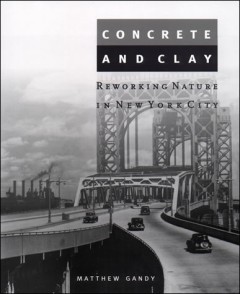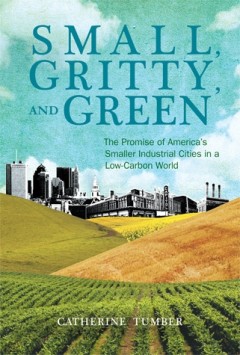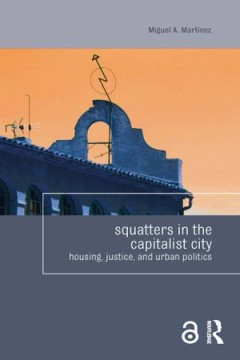Filter by

Land Use Cover Datasets and Validation Tools
This chapter offers an introduction to the book and is specifically recommended for all readers intending to do the practical exercises it contains. It also provides readers with all the information they require to make the most of the book’s contents. In this chapter, we explain the aim, structure and intended audience for this book. We also give the readers a few tips and guidelines a…
- Edition
- -
- ISBN/ISSN
- 9783030909987
- Collation
- XIV, 462
- Series Title
- -
- Call Number
- -

Land Use Cover Datasets and Validation Tools
This open access book represents a comprehensive review of available land-use cover data and techniques to validate and analyze this type of spatial information. The book provides the basic theory needed to understand the progress of LUCC mapping/modeling validation practice. It makes accessible to any interested user most of the research community's methods and techniques to validate LUC maps …
- Edition
- -
- ISBN/ISSN
- 978-3-030-90998-7
- Collation
- -
- Series Title
- -
- Call Number
- -

Land tenure reform in Sub-Saharan Africa: interventions in Benin, Ethiopia, R…
- Edition
- -
- ISBN/ISSN
- 9781003365679
- Collation
- -
- Series Title
- -
- Call Number
- -
- Edition
- -
- ISBN/ISSN
- 9781003365679
- Collation
- -
- Series Title
- -
- Call Number
- -

Rethinking Global Land Use in an Urban Era
Today, global land use is affected by a variety of factors, including urbanization and the growing interconnectedness of economies and markets. This book examines the challenges and opportunities we face in achieving sustainable land use in the twenty-first century. The contributors, from a range of disciplines and countries, present new analytical perspectives and tools for understanding key i…
- Edition
- -
- ISBN/ISSN
- 9780262322126
- Collation
- 1 online resource.
- Series Title
- -
- Call Number
- -

Concrete and Clay: Reworking Nature in New York City
An interdisciplinary account of the environmental history and changing landscape of New York City.In this innovative account of the urbanization of nature in New York City, Matthew Gandy explores how the raw materials of nature have been reworked to produce a "metropolitan nature" distinct from the forms of nature experienced by early settlers. The book traces five broad developments: the expan…
- Edition
- -
- ISBN/ISSN
- 9780262273442
- Collation
- 1 online resource (xi, 344 pages) :illustrations, maps.
- Series Title
- -
- Call Number
- -

Small, Gritty, and Green: The Promise of America's Smaller Industrial Cities …
How small-to-midsize Rust Belt cities can play a crucial role in a low-carbon, sustainable, and relocalized future.OCLC-licensed vendor bibliographic record.
- Edition
- -
- ISBN/ISSN
- 9780262302708
- Collation
- 1 online resource (xxxiv, 211 pages) :illustrations.
- Series Title
- -
- Call Number
- -

Squatters in the Capitalist City: Housing, Justice, and Urban Politics
To date, there has been no comprehensive analysis of the disperse research on the squatters’ movement in Europe. In Squatters in the Capitalist City, Miguel A. Martínez López presents a critical review of the current research on squatting and of the historical development of the movements in European cities according to their major social, political and spatial dimensions. Comparing citi…
- Edition
- -
- ISBN/ISSN
- 9781317514749
- Collation
- -
- Series Title
- -
- Call Number
- 720 MAR s

Pastoral capitalism :a history of suburban corporate landscapes
"Mozingo distinguishes among three forms of corporate landscapes--the corporate campus, the corporate estate, and the office park--and examines suburban corporate landscapes built and inhabited by such companies as Bell Labs, General Motors, Deere & Company, and Microsoft. She also considers the globalization of pastoral capitalism in Europe and the developing world including Singapore, India, …
- Edition
- -
- ISBN/ISSN
- 9780262338271
- Collation
- 1 online resource (x, 315 pages) :illustrations (some color).
- Series Title
- -
- Call Number
- -

Making a middle landscape
Today's suburban metropolitan development of single-family homes, shopping centers, corporate offices, and roadway systems constitute what Peter Rowe calls a ""middle landscape"" between the city and the country. Looking closely at suburban America in terms of design and physical planning, Rowe builds a case for a new way of seeing and building suburbia - complete with theoretical underpinnings…
- Edition
- -
- ISBN/ISSN
- 0262367947
- Collation
- 1 online resource (325 pages) :illustrations, maps.
- Series Title
- -
- Call Number
- -

The working landscape :founding, preservation, and the politics of place
Based on the author's Ph. D. thesis, Harvard University, 2000.In America today we see rampant development, unsustainable resource exploitation, and commodification ruin both natural and built landscapes, disconnecting us from our surroundings and threatening our fundamental sense of place. Meanwhile, preservationists often respond with a counterproductive stance that rejects virtually any chang…
- Edition
- -
- ISBN/ISSN
- 9780262269803
- Collation
- 1 online resource (xvi, 425 pages).
- Series Title
- -
- Call Number
- -
 Computer Science, Information & General Works
Computer Science, Information & General Works  Philosophy & Psychology
Philosophy & Psychology  Religion
Religion  Social Sciences
Social Sciences  Language
Language  Pure Science
Pure Science  Applied Sciences
Applied Sciences  Art & Recreation
Art & Recreation  Literature
Literature  History & Geography
History & Geography